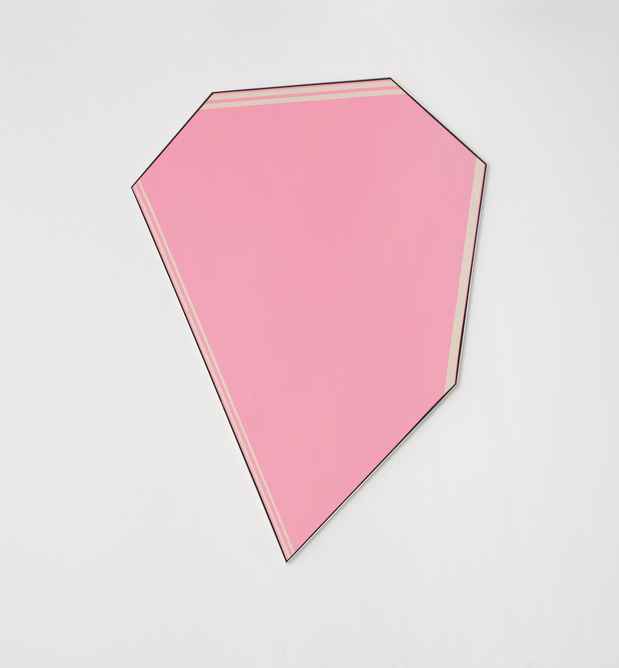Kenneth Noland “UNBALANCED”
Paul Kasmin Gallery (515 W 27th)

This event has ended.
It’s been on my mind—what would something be like if it were unbalanced? It’s been a vexing question for a long time. But it took the experience of working with radical kinds of symmetry, not just a rectangle, but a diamond shape, as well as extreme extensions of shapes, before I finally came to the idea of everything being unbalanced, nothing vertical, nothing horizontal, nothing parallel. I came to the fact that unbalancing has its own order. In a peculiar way it can still end up feeling symmetrical. – Kenneth Noland, 1977
Paul Kasmin Gallery presents Kenneth Noland: UNBALANCED. The exhibition focuses on the American Color Field painter’s iconic shaped canvases from the mid-to-late 1970s.
Noland was a pioneer of the shaped canvas, utilizing the forms as a means to generate a singular, unified experience within a color field. The artist considered the composition’s edge to be of equal importance to the center, and his iconic bands of color, known as “Rays” would often populate only the outer reaches of the canvas, as seen in notable works such as Ring, 1977 (pictured above) and Acute, 1977. His studies under Bauhaus expatriate Josef Albers at Black Mountain College deeply influenced his intuitive rather than theoretical approach to understanding color relationships. His palette was offbeat, challenging, and often characterized by surprising juxtapositions. But the result was unexpectedly harmonious, as encapsulated by essayist Alex Bacon in his text accompanying the exhibition where he suggests that “the calibration of the oscillating stripes causes the paintings to flex and shimmer as the eye twists and turns across the sinuous but taut picture plane.”
This is the first solo exhibition of the artist’s work at Paul Kasmin Gallery.
Kenneth Noland (b. 1924, d. 2010) first developed an interest in the emotional effects of color and geometric forms at Black Mountain College where he studied under Ilya Bolotowsky from 1946-48. Known first for his target paintings, Noland became a defining Color Field painter by applying a vast range of acrylic hues in his visual language of chevrons, horizontal bands and diamonds, on diversely shaped canvases. In 1964, he was included in the Venice Biennale and in 1977 the Solomon R. Guggenheim Museum hosted his first major retrospective that then traveled to the Hirshhorn Museum and Sculpture Garden in Washington, D.C. and the Toledo Museum of Art in Ohio. Noland’s work is held in the permanent collections of prominent museums and institutions worldwide including; the Los Angeles County Museum of Art, California, The Museum of Modern Art, New York, The Metropolitan Museum of Art, New York, Musée National d’Art Moderne, Centre National d’Art et de Culture Georges Pompidou, Paris, the National Gallery of Art, Washington, D.C., and the Whitney Museum of American Art, New York. Upon his death in 2010, the Solomon R. Guggenheim Museum honored Noland with a memorial exhibition titled Kenneth Noland, 1924-2010, as a tribute to his significant contributions to the history of abstraction.
Media
Schedule
from January 28, 2016 to February 27, 2016